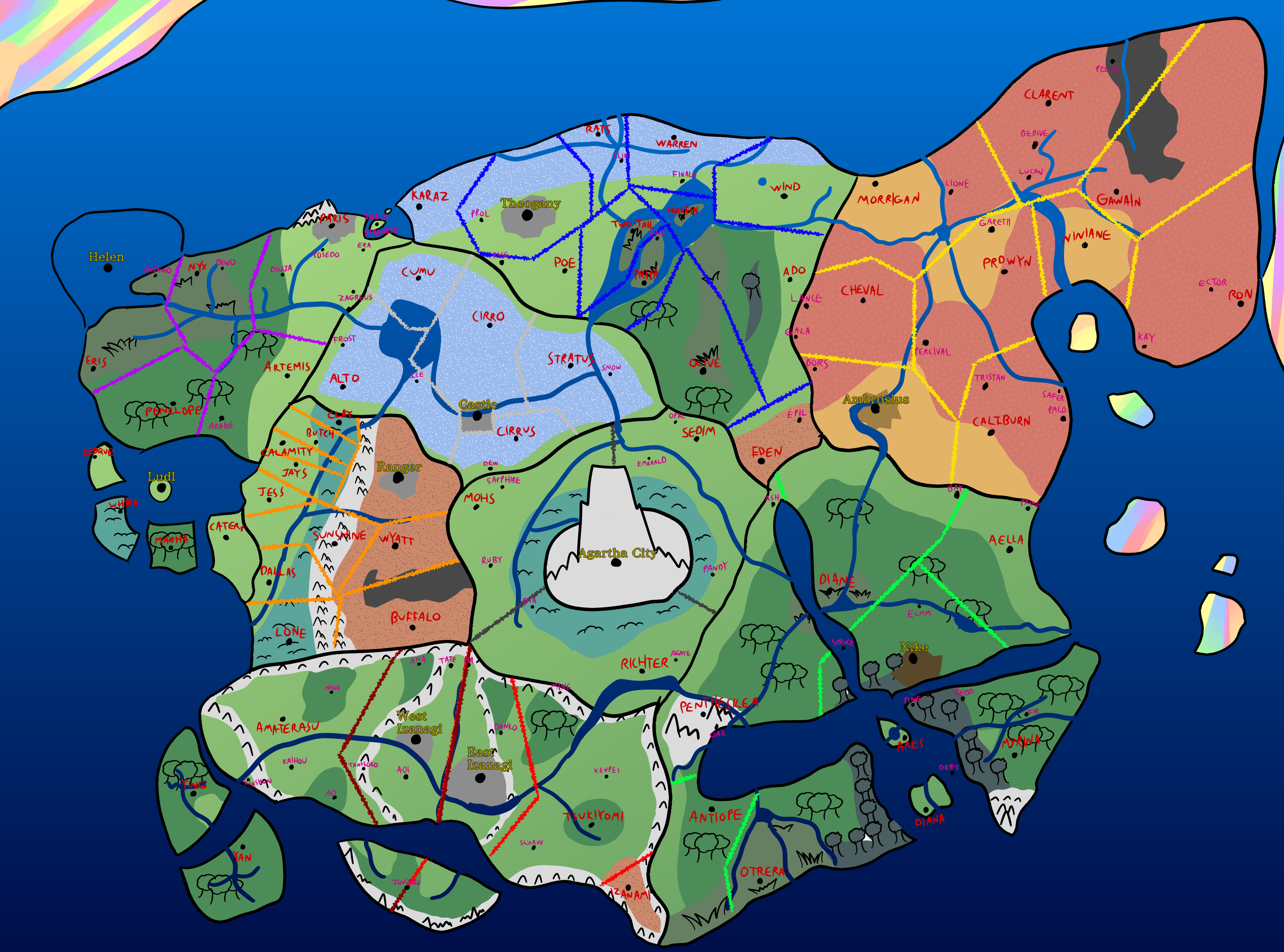Aasimar
Aasimar are strange beings. On paper, they are similar to infernal Tieflings, being partial divinity rather than partially fiendish, but unlike Tieflings, they have no natural occurrence from the Mortal Forms.
Aasimar are born from a union of mortality and divinity. Sometimes this is a mortal incarnation of a divine or semi-divine being, sometimes this is a demigod-like union of divinity and mortality to bear an Aasimar child or the influence of a god's direct contact.
Typically, there is no one set Aasimar culture, as they are born of any culture, but there are a handful of Aasimar centric communities throughout Edda, and one on another plane. Typically, there are three types of Aasimar.
Protector Aasimar are born from divinity with benevolent intent, or of a more benevolent nature. They are drawn towards protection, as their name suggests, and if they have a directive it's of a defensive nature.
Scourge Aasimar are born from divinity that, while they might be benevolent, has an aggressive nature. War Gods, spirits of combat, ghasts born from bloodshed, etcetera. They are drawn towards fighting and combat, or roles within combat, but don't have to be any less benevolent than their Protector cousins.
Fallen Aasimar are a strange case. They are either born from divinity of a negative nature, or other Aasimar who have lost their touch with divinity while maintaining their lives. However, there also exists a large community of "Fallen" Aasimar within The Midnight Realm, a plane full of Necrotic and Dark energy. These Aasimar are born "Fallen" due to the necrosis of the leylines beneath them. While being titled Fallen might imply a dark response, Fallen Aasimar are no more inclined to villainy and evil than their other Aasimar cousins, but they might have a harder time connecting with the Divinity that spawned them.
Naming Traditions
Unisex names
Since Aasimar appear throughout many cultures and groups, they share the names with their family or those who raised them. The language of Divinity that they share, Celestial, can sometimes give way to them forming mortal names and Divine names, those that they speak to the gods and other Aasimar with. Most Divine names utilize one or two simple words that describe the Aasimar's personality, divine goal, or attributes they wish to share.
Culture
Major language groups and dialects
The divine language, Celestial, is the shared language for the Aasimar and is less of a spoken language than it is one relying on simple words and sentences sung in certain pitches and tones.
Shared customary codes and values
Aasimar tend to be relentlessly stubborn, especially in regards to their divine calling. A protector Aasimar will defend their group until the end, a scourge Aasimar will fight to the same extreme, and a fallen Aasimar will persist on their own path no matter what obstacle is in their way.
This isn't to say that they can't change course if no option remains, but they will exhaust every other option before they consider giving up.
Common Dress code
Most Aasimar have to find or craft clothing to accommodate their divine features, typically wings, or decorate themselves in colors and accessories that denote their divine origins.
Art & Architecture
Legends of Aasimar warriors, children of gods who arose to defend the people of Edda in their darkest hours, are popular throughout Edda's literary history, spawning an entire genre of dramatic fiction known as Dramaasimar. The popularity of these styles of story wavered in the advent of The Border Wars, but remain decently popular.
Birth & Baptismal Rites
When an Aasimar is born, it is typically foretold in minor ways for the faithful to notice, and the child is quickly anointed by followers of their shared divinity. In some cases, the child will be given to the church to raise with the proper understanding, but more often than not local faithful will work with the parents to raise the child safely.
Coming of Age Rites
When the body of an Aasimar finishes developing relative to their mortal half, they will begin to fully manifest their divine abilities and awaken to the drive that is instilled in them via that same divinity.
Ideals
Beauty Ideals
Traditionally, the more beautiful Aasimar is the more they resemble their divine origins. For example, an Aasimar descending from a God-Fae or one of their ilk will appear more colorful and nature-like, whereas an Aasimar descending from The Mother Dragons will have scales, wings, and other dragon-like appearances.
For the Fallen Aasimar in the Midnight Realm, while beauty is entirely subjective, many of them do decorate their hair with shimmering silver flecks, or items that give the appearance of it, in reverence to the deity that calls to them.
Gender Ideals
Due to the widespread gender identities of various Deities, Aasimar don't have any specific gender ideals, aside from what they might pick up from the culture of their mortal side.



Comments